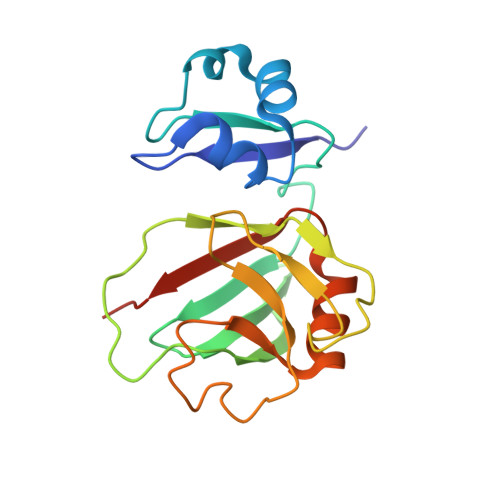Dynamics Induced by Beta-Lactam Antibiotics in the Active Site of Bacillus subtilis L,D-Transpeptidase.
Lecoq, L., Bougault, C., Hugonnet, J., Veckerle, C., Pessey, O., Arthur, M., Simorre, J.P.(2012) Structure 20: 850-861
- PubMed: 22579252
- DOI: https://doi.org/10.1016/j.str.2012.03.015
- Primary Citation of Related Structures:
3ZQD, 4A52 - PubMed Abstract:
β-lactams inhibit peptidoglycan polymerization by acting as suicide substrates of essential d,d-transpeptidases. Bypass of these enzymes by unrelated l,d-transpeptidases results in β-lactam resistance, although carbapenems remain unexpectedly active. To gain insight into carbapenem specificity of l,d-transpeptidases (Ldts), we solved the nuclear magnetic resonance (NMR) structures of apo and imipenem-acylated Bacillus subtilis Ldt and show that the cysteine nucleophile is present as a neutral imidazole-sulfhydryl pair in the substrate-free enzyme. NMR relaxation dispersion does not reveal any preexisting conformational exchange in the apoenzyme, and change in flexibility is not observed upon noncovalent binding of β-lactams (K(D) > 37.5 mM). In contrast, covalent modification of active cysteine by both carbapenems and 2-nitro-5-thiobenzoate induces backbone flexibility that does not result from disruption of the imidazole-sulfhydryl proton interaction or steric hindrance. The chemical step of the reaction determines enzyme specificity since no differences in drug affinity were observed.
Organizational Affiliation:
CEA, DSV, Institut de Biologie Structurale (IBS), Grenoble F-38027, France.















